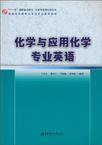化学与应用化学专业英语
出版时间:2010-8 出版社:华东理工大学出版社 作者:王幸宜,戴启广,马海燕,詹望成 编著 页数:310
Tag标签:无
前言
随着中国改革开放、加入世贸以及市场经济的发展,不管是企业中的业务推广、谈判还是科研机构中的技术研发,同国外的科技交流与合作日趋增多,因此对既懂专业知识又懂英语的人才需求量日益提高。为了适应这种形势的发展需要,有必要加强化学专业英语的教育,提高在校本科生、研究生以及相关人员的英语水平。因而,化学专业英语成为国内各高等院校化学、应用化学及相关专业的一门专业必修课。 本书共分为9个单元,内容涵盖综合化学、无机化学、有机化学、物理化学、分析化学、生物化学、材料科学、单元操作、科技文献,除综合化学和科技文献两单元外,每单元均由数量不等、选自国外原版英文书籍的相关文章组成,每课由以下8个部分组成:Paper、New Words and Expressions、Words to Know、Notes、Further Reading、Solved Problems、Supplementary Reading、Practical Reading。其中,综合化学单元作为基础介绍篇,其目的在于为读者提供对化学学科的基础认识,包括两篇文章,分别描述了化学学科的基础以及化学学科的展望;科技文献单元作为提高篇,主要针对有意进入研究生阶段学习的本科生,目的在于为读者提供科技文献阅读和写作相关的基础知识,教师在讲授过程中可将此单元作为自学篇。其他单元课文选材广泛,对化学及其相关交叉学科进行了基础而全面的介绍,内容由浅入深。本书每单元组成部分的内容安排有如下特色: (1)Words to Know,扩充词汇。进一步提供与正文相关的专业词汇,使读者可以凭借这些词汇阅读更广泛的科技文献。 (2)Notes,注重对化学问题的注释。减少对英语语法本身的注释,突出科技英语的特点。 (3)Further Reading,深入阅读。对正文某个具体问题或某个概念进行深入介绍,使读者能够以英语的思维方式对正文所涉及的化学知识有进一步的认识。 (4)Solved Problems,课后习题。习题大多数来自英文原版教材。此部分让读者结合专业课程的学习,用英文作解答问题练习(如概念问答、解释题型需采用英文作答)。
内容概要
本书是根据大学英语教学大纲的专业阅读部分的要求而编写的,旨在为化学、应用化学专业提供一本比较系统的专业英语教学用书。《化学与应用化学专业英语》共分为9个单元,内容涵盖综合化学、无机化学、有机化学、物理化学、分析化学、生物化学、材料科学、单元操作和科技文献,每课由Paper、New Wordsand Expressions、Words to Know、Notes、Further Reading、Solved Problems、Supplementary Reading和Practical Reading 8个部分组成,形式安排新颖、内容覆盖面广。书后还附录如下实用内容:(1)化学元素名称中英文对照表;(2)化学专业英语词汇常用前后缀;(3)化学常见缩略语;(4)化学实验室常用仪器名称;(5)常用英文化学分子式、方程式及数学式的读法。另外,为了便于读者的查阅,《化学与应用化学专业英语》还附有课文生词表。 本书可供化学、应用化学专业本科生的专业英语教学或双语教学,也可以作为相关专业的研究生、教师以及科技人员的参考用书。
书籍目录
Unit One General Chemistry Lesson One Chemistry Today and Tomorrow: the Central, Useful and Creative Science Lesson Two Frontiers in ChemistryUnit Two Inorganic Chemistry Lesson One The Nomenclature of Inorganic Compounds Lesson Two Oxidation-Reduction Reaction Lesson Three Acids and Bases Lesson Four Coordination ChemistryUnit Three Organic Chemistry Lesson One Structure and Bonding Lesson Two Functional Groups and Chemical Families Lesson Three Nomenclature of Organic Compounds Lesson Four Green ChemistryUnit Four Physical Chemistry Lesson One The First Law of Thermodynamics Lesson Two Chemical Equilibrium Lesson Three Electrolysis Lesson Four CatalysisUnit Five Analytical Chemistry Lesson One Qualitative Chemical Analysis Lesson Two Molecular Absorption Spectroscopy Ultraviolet-Visible and Infrared Spectrophotometry Lesson Three Mass Spectrometry Lesson Four Nuclear Magnetic Resonance Spectroscopy Lesson Five Gas ChromatographyUnit Six Biochemistry Lesson One Enzymes Lesson Two GlycolysisUnit Seven Materials Science Lesson One Polymer Lesson Two Nanotechnology Lesson Three Liquid CrystalsUnit Eight Unit Operation Lesson One Distillation Lesson Two Solvent Extraction Lesson Three CrystallizationUnit Nine Scientific Paper and Literature (Elective Course) Lesson One How to Read a Scientific Paper? Lesson Two How to Write a Scientific Paper? Lesson Three Introduction of PatentAppendix Ⅰ Chinese and English Name of the Chemical ElementsAppendix Ⅱ Common Chemical Prefix and SuffixAppendix Ⅲ Common Chemical AbbreviationAppendix Ⅳ Common Chemical Glassware NamesAppendix Ⅴ Pronunciation of Common Molecular Formula, Chemical Equations and Mathematical EquationsSubject IndexReferences
章节摘录
These early "chemists" made such discoveries by accident, and for a long timeaccident was the principal means of discovery. Accident still remains important todiscovery, but with our increasing chemical understanding we now usually create newchemical substances by design. After the early period of random discovery, humans began heating substancestogether intentionally to see what occurs. When a material that we now call iron ore washeated with charcoal, it produced iron metal, a new substance (we now use coke,produced from coal, instead of charcoal). Iron ore contains a chemical in which ironatoms are chemically bound to oxygen atoms. Heating it with charcoal lets the carbonatoms of charcoal bind to the oxygen atoms and carries them off as the gas carbonmonoxide, leaving iron behind. Only gold and some metals related to platinum occurnaturally as metals; all others are made from their ores by such chemical processes. Modern chemistry is devoted to understanding the chemical structures and propertiesof natural chemicals and of chemicals created by building on what nature has supplied.Why do chemists call their discipline the "central science"? Chemistry touches many other scientific fields. It makes major contributions toagriculture, electronics, biology, medicine, environmental science, computer science,engineering, geology, physics, metallurgy, and mineralogy, among many others. It doesnot ask the physicists question: What is the ultimate nature of all matter? Instead it asksthe chemists questions: Why do the substances of the world differ in their properties?How can we control and most effectively utilize these properties?
编辑推荐
“十一五”国家重点图书。
图书封面
图书标签Tags
无
评论、评分、阅读与下载
用户评论 (总计9条)
- 以前上课用的是北大出版的那本专业英语。而这本是分学科介绍的内容浅显易懂,词汇总结的也很好。
- 很好,内容丰富是工科生学习化学相关专业英语的好书
- 不错不错不错!内容很合理!
- 印刷一流
- 此书是我学专业课本,非常满意。。
- 绝对的好书,能学到不少有用的东西
- 还没开始看呢,大致翻了一下,感觉难度都比较合适
- 不错,教学用的参考书。
- 非常凌乱的编排,内容也是在不怎么样。如果不是教材需要,绝对不会买。价格也绝对不合理。
推荐图书
- 放学歌快乐宝贝(3CD) [套装]
- 宝宝儿歌85首(3CD) [套装]
- 快乐妈妈与天才宝贝(3CD) [套装]
- 莫扎特3Q宝贝(3CD) [套装]
- 影响中国孩子的46首永恒的古典音乐下(3CD) [套装]
- 影响中国孩子的46首永恒的古典音乐上(3CD) [套装]
- 宝宝学儿歌(3CD) [套装]
- 宝贝的音乐教室(3CD) [套装]
- 上学歌快乐宝贝(3CD) [套装]
- 世上只有妈妈好(3CD) [套装]
- 望族(6DVD 简装版)
- 杨蔓:烟雨江南(CD)
- 雨天:忘情的都市(2CD) [套装]
- 蜗居(12DVD)
- 仰角(11DVD)
- 我是好宝宝(2VCD+书)
- 小小羊儿要回家(2VCD+书)
- 异形战场(DVD)
- 五朵金花(4DVD)
- 异形3(DVD)
- 张卫东演唱戏说牡丹亭(CD) [套装]
- 柯莉Kerli:Love Is Dead 情已逝(CD)
- 蔡琴2009年新专辑:爱像一首歌(CD) [套装]
- 黑眼豆豆The Black Eyed Peas:The E.N.D.能.量.豆.阵.(CD)
- 宝宝儿歌75首(3CD) [套装]
相关图书
- 鹰眼
- 星际迷航
- (DVD)(特价)告密者
- 特种部队
- (DVD)(特价)守望者(蓝色DVD盒)
- (DVD)(特价)野兽家园
- 妈妈,我想要一只狗
- 危机与变局
- 英汉对比翻译导论
- 创意与创造
- 《当代中文》课本
- 《当代中文》练习册
- 新编大学应用写作
- 高等数学(上册)
- 让孩子远离伤害(6DVD+4CD)
- 吴浩康:破格(CD)
- 小学生必背古诗词
- 小学生必背古诗词
- 金牌儿歌(3CD) [套装]
- 聪明宝宝听出来的奇迹(3CD) [套装]
- 天才宝宝PQ效应(3CD) [套装]
- 天才宝宝EQ效应(3CD) [套装]
- 天才宝宝IQ效应(3CD) [套装]
- 准妈妈的古典音乐(3CD) [套装]
- 一分钱快乐宝贝(3CD) [套装]
